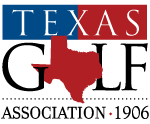Around the Green
The latest golf-related news, notes, and feature stories from the TGA.
HOLE HANDICAPPING HEADACHES?
Sometimes the No.1 handicap hole on the course is also the toughest…and sometimes it isn’t. This can be perplexing for members and perhaps for club staff as well. The root of the confusion generally stems from a stubborn, lingering misconception about how and why holes are assigned a handicap number (stroke allocation). Despite the feelings of most golfers, the stroke hole allocation of a course is not supposed to represent a ranking of the difficulty of the holes. Instead, it represents the ranking of the holes where a high-handicapped golfer most needs a stroke in order to tie a low-handicapped golfer.
In many instances, this need for strokes does occur on the most difficult holes, but not always. The basic principle of allocating handicap strokes is to equalize the abilities of players at different handicap levels. A handicap stroke should be an equalizer rather than a winning stroke and should be available on a hole where it most likely will be needed by the higher-handicapped player to obtain a half in singles or four-ball match play. In other words, the No.1 handicap stroke hole should be assigned to the hole where the bogey golfer needs the additional stroke in order to halve the hole with the scratch golfer. If a low-handicap golfer is just as likely to make bogey as a high-handicapper, a stroke isn't needed. Par is irrelevant in this exercise as it’s not an effective indicator of a need for a stroke.
Consider, for example, a 225-yard par-3 with all sorts of difficulty around the green. The hole may prove to be tough to score a three on for even the very best golfers at the club and may sport a high overall scoring average.
On the other hand, the higher handicapper may not be able to reach the green in regulation, but is easily able to pitch it on in two and two putt for a four. Even though this hole would have a high overall scoring average, clearly it does not represent a hole where the higher handicapped player most needs a stroke in order to tie a low handicapped player.
So how does a club determine where the strokes should be allocated? Section 17 of the USGA Handicap System offers two ways by which a course can apply stroke allocation to holes: Regression Method and Comparison Method. Both can be a time consuming and mathematically challenging process if done by hand, but one of the benefits of TGA Member Clubs utilizing the GHIN Handicap Service is that they have the ability to capture the hole-by-hole scoring information and run the analysis themselves. (Of course, the TGA staff is always available and happy to assist with this process.)
Regression Method
The Regression Method (Section 17-2a) is the USGA recommended approach for allocating handicap strokes to equalize the abilities of players at different handicap levels. This method utilizes a minimum of 400 hole-by-hole scores considering all Course Handicaps to allocate handicap strokes.
To better understand how to implement the Regression Method at your club, CLICK HERE, for step-by-step instructions under Section 17-2a of the USGA Handicap System Manual.
Comparison Method
The Comparison Method (Section 17-2b) uses a minimum of 200 scorecards from a group of low handicapped golfers (Course Handicaps of 8 or less for men; 14 or less from women) compared to a minimum of 200 scorecards from a group of higher handicapped golfers (Course Handicaps of 20-28 for men; 26-40 for women). When the hole-by-hole stroke averages of the two groups are laid out side-by-side, the holes with the greatest need can easily be identified by the large gaps in the scoring averages.
To better understand how to implement the Comparison Method at your club, CLICK HERE, for step-by-step instructions under Section 17-2b of the USGA Handicap System Manual.
Summary
No matter which method is used, the ultimate decision on stroke hole allocation rests solely with the club and Handicap Committee. For an 18-hole golf course the USGA recommends that odd-number strokes be placed on the front nine and even-number strokes on the back (it will equalize the distribution of strokes over the entire course and make matches more equitable). There are some instances, though, where back nine holes are significantly more difficult and the club may choose to allocate the even number holes on the front.
Also, the club should give consideration to avoiding allocating the low numbered strokes at the end of each nine because you want players who receive strokes to be able to take advantage of them before a match is decided. Furthermore, in the event of a hole-by-hole playoff, the club should consider not placing lower numbered strokes on the first and second holes.
Given all the above information and calculations, coupled with the seriousness in which golfers regard their handicaps, it's little wonder why stroke hole allocation is often a hotly debated topic.
If you have any questions or would like some guidance on stroke hole allocation at your club, please contact Mary Harrison (214) 468-8942 or [email protected] and let us be of assistance!
Helpful Link:
> Section 17 of the USGA Handicap System Manual



